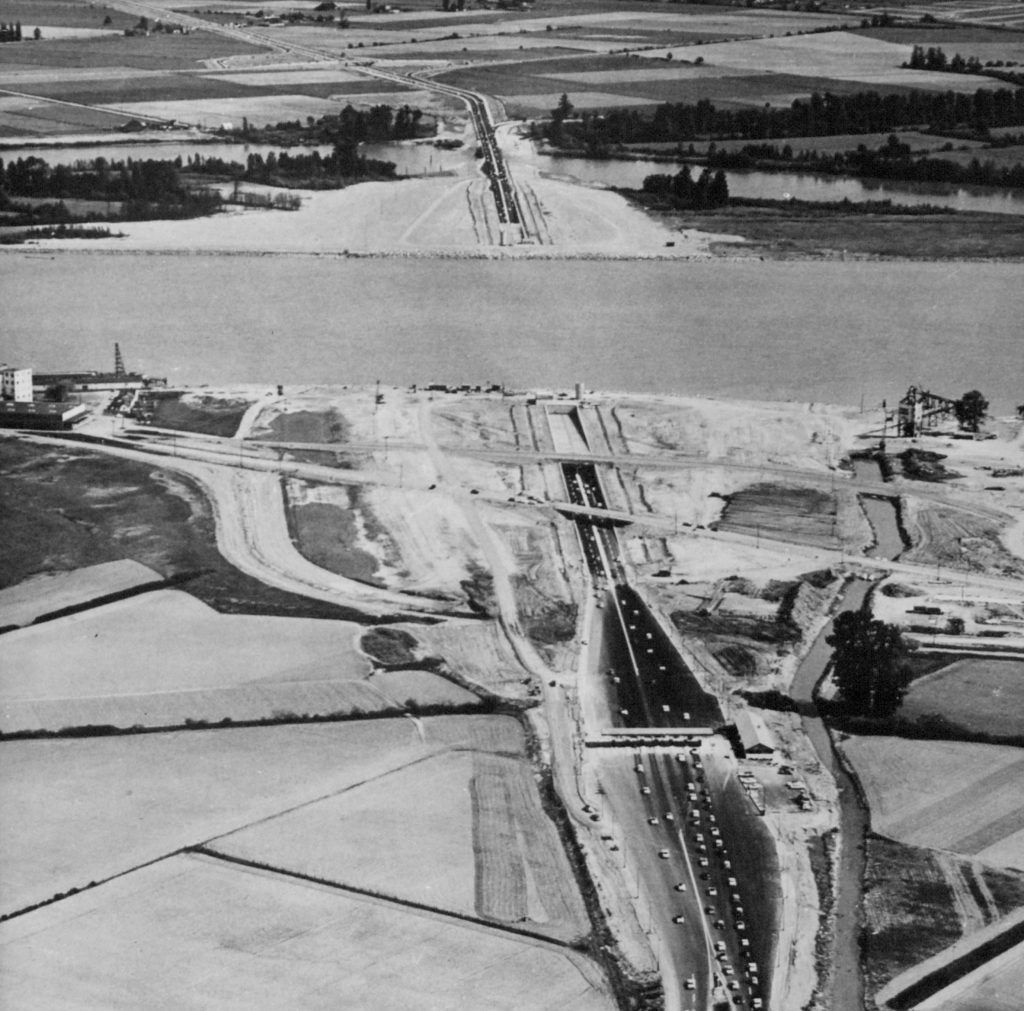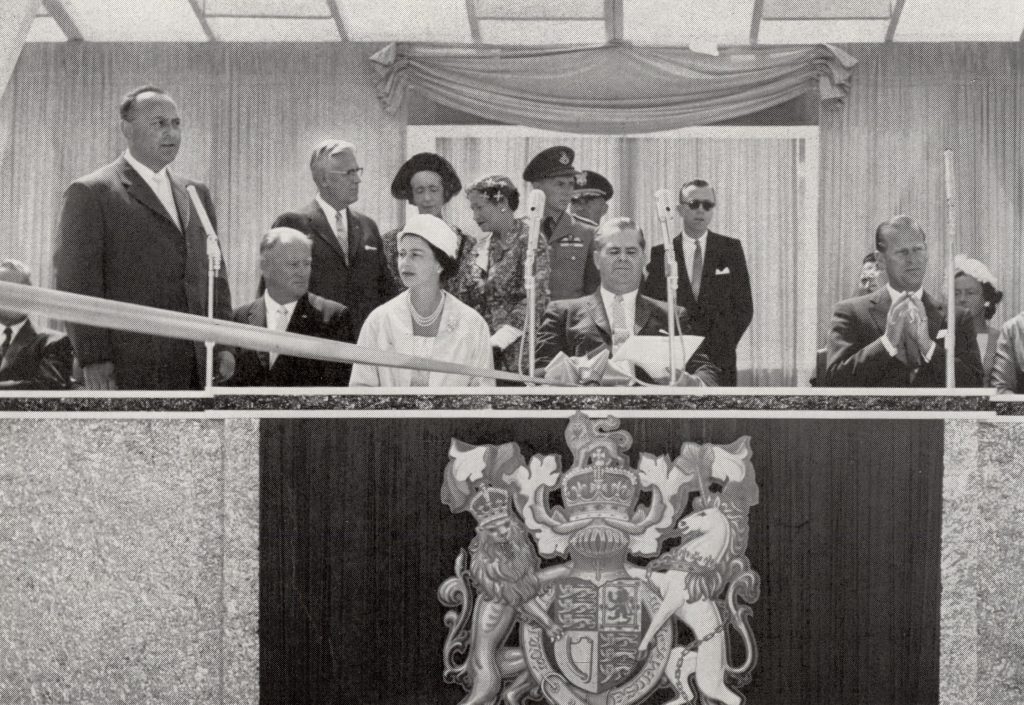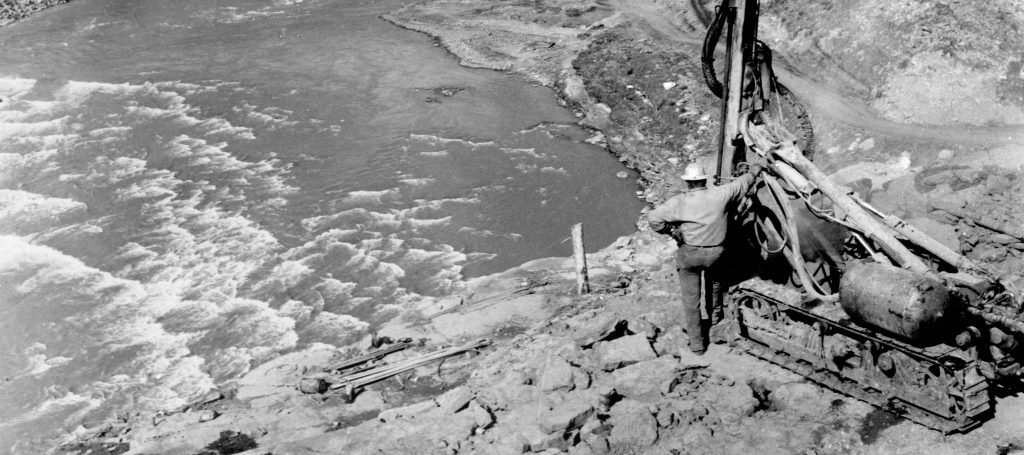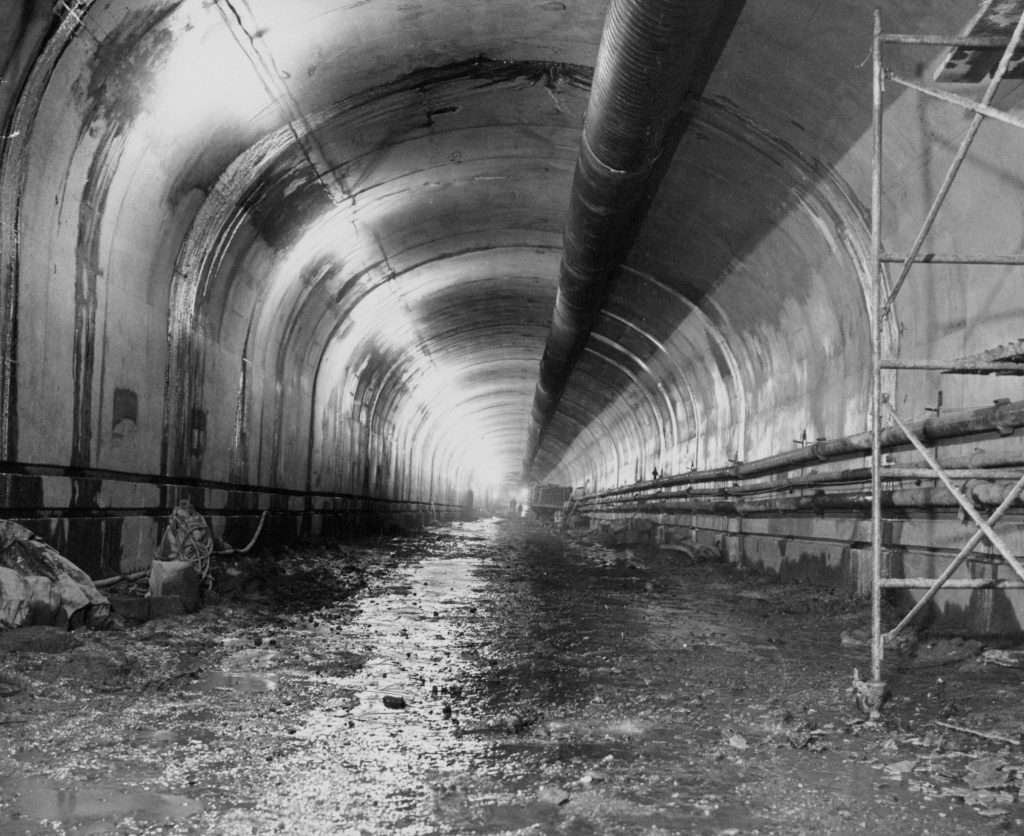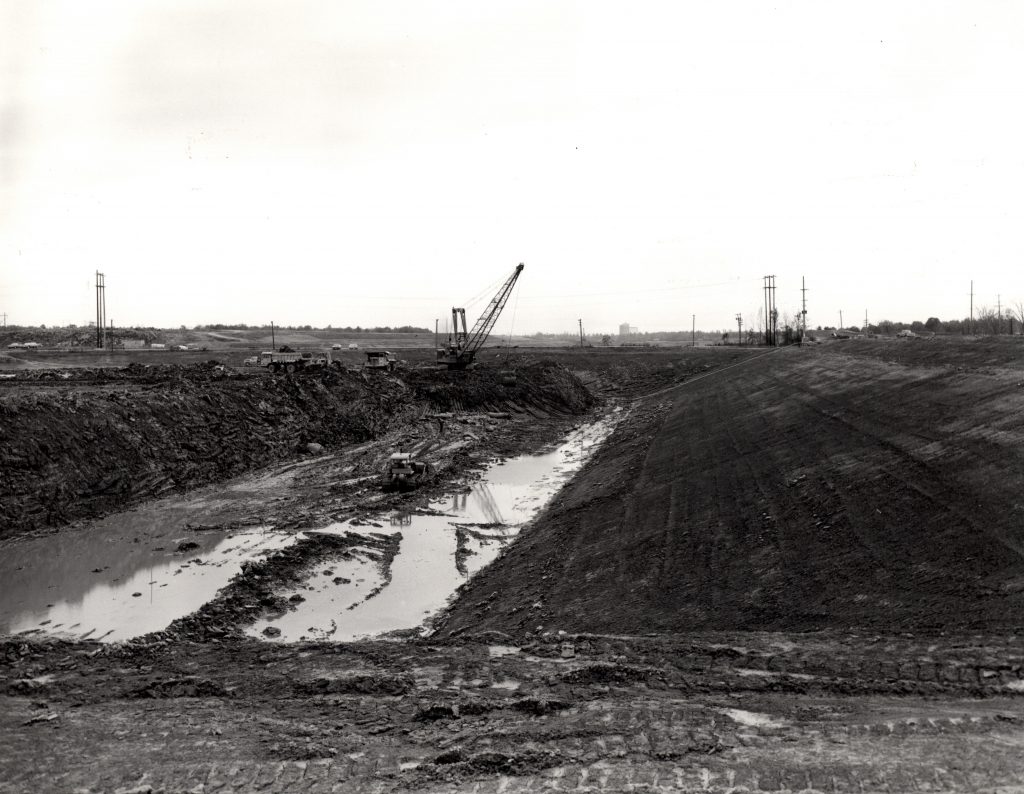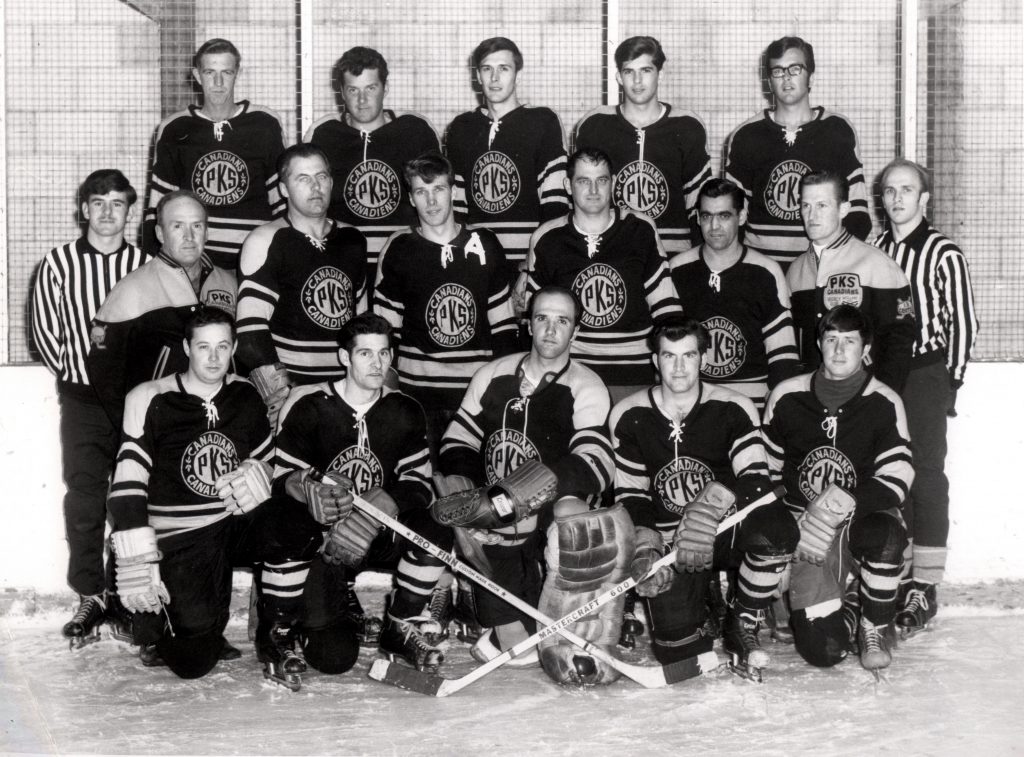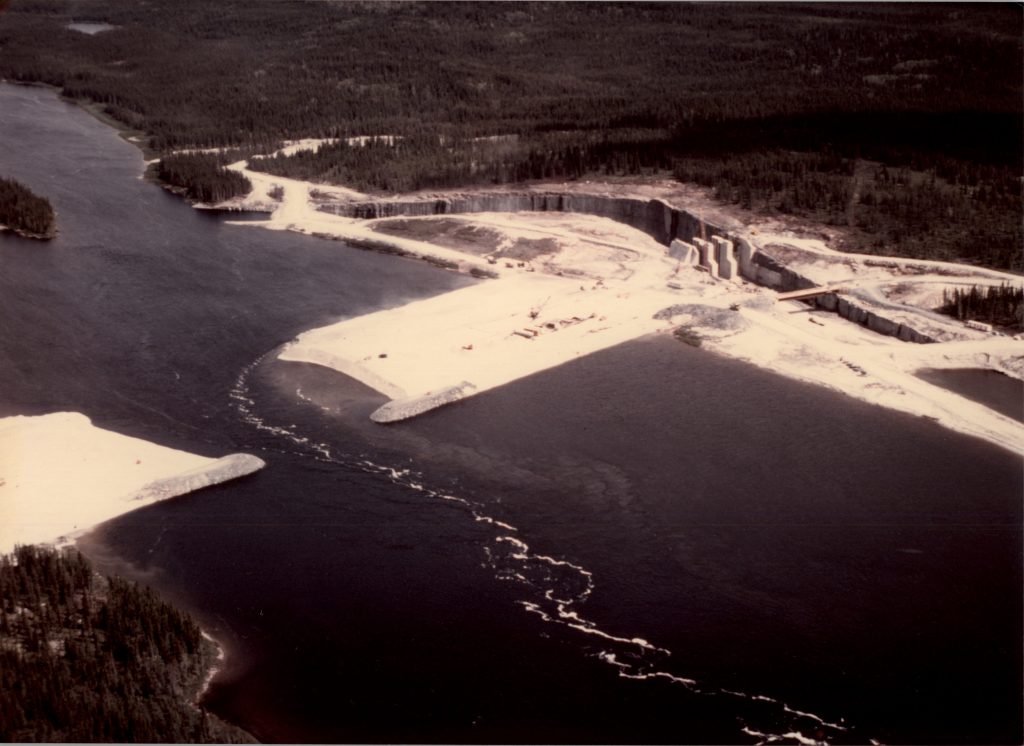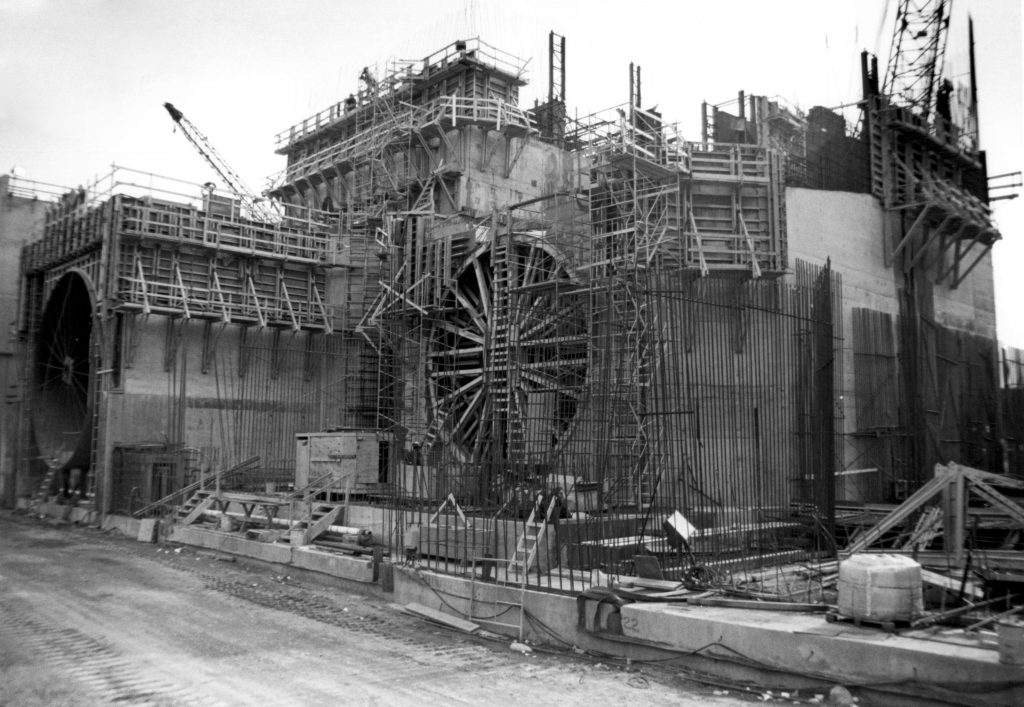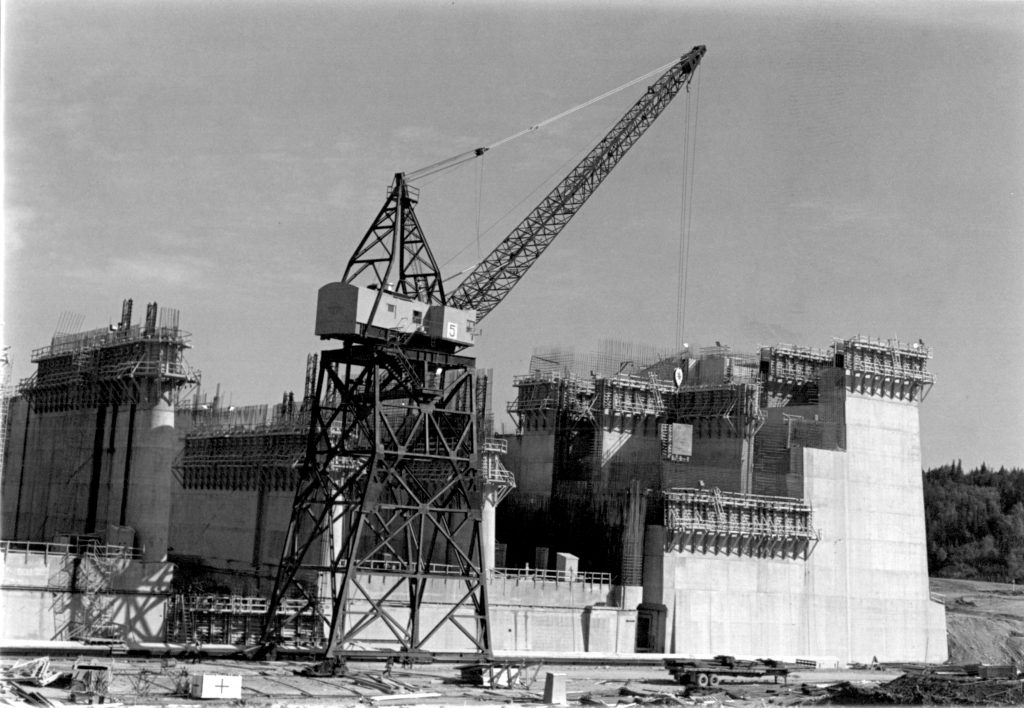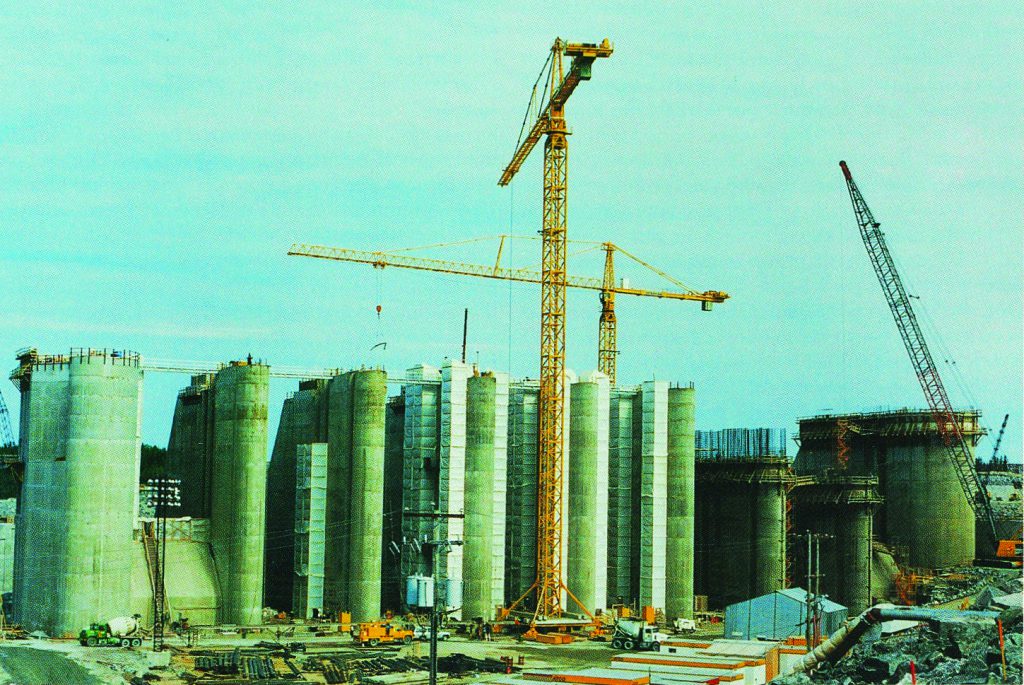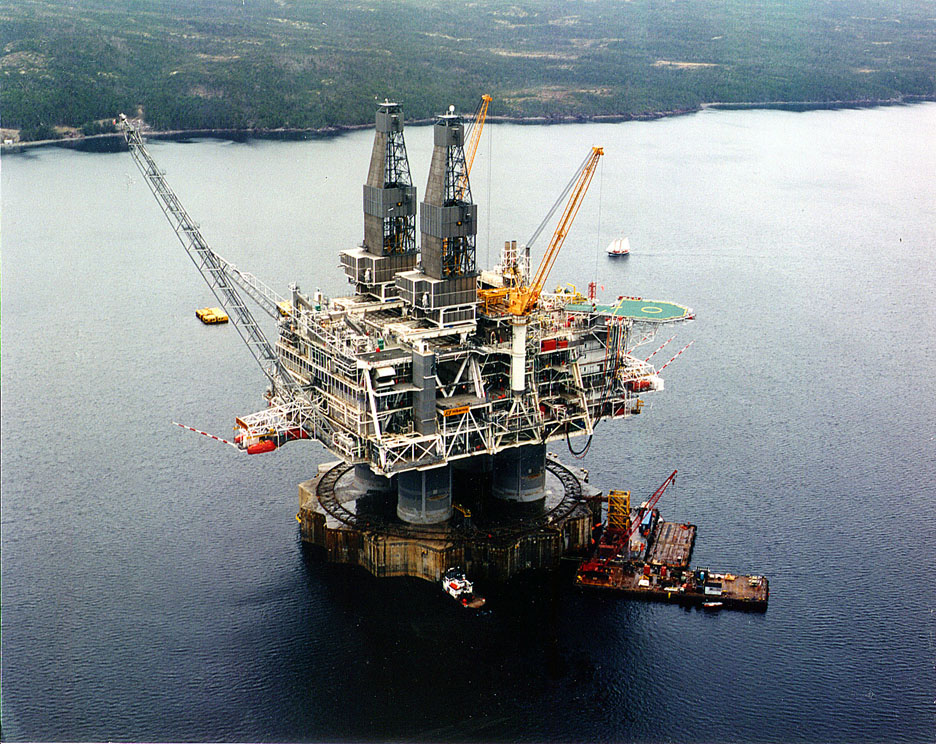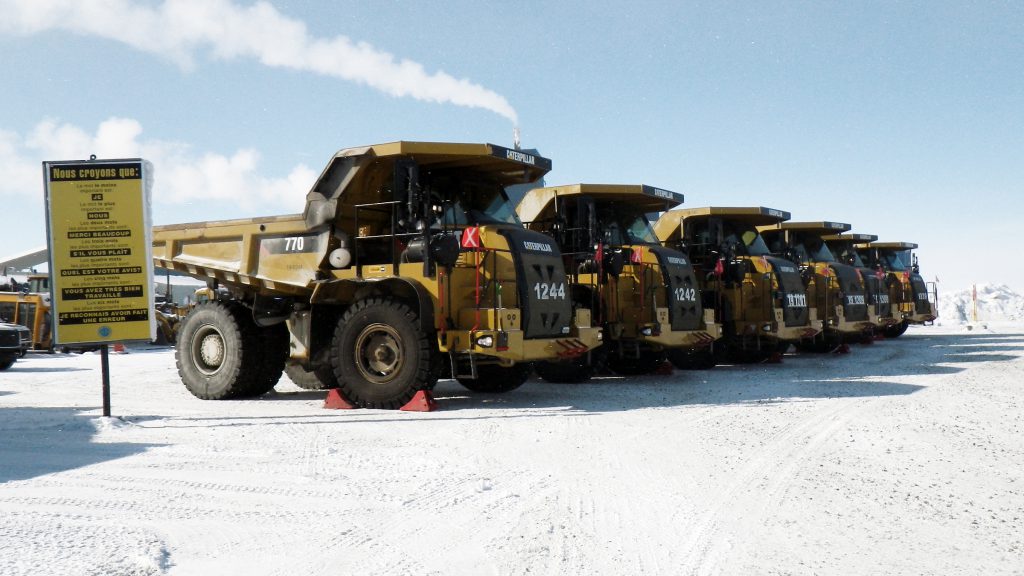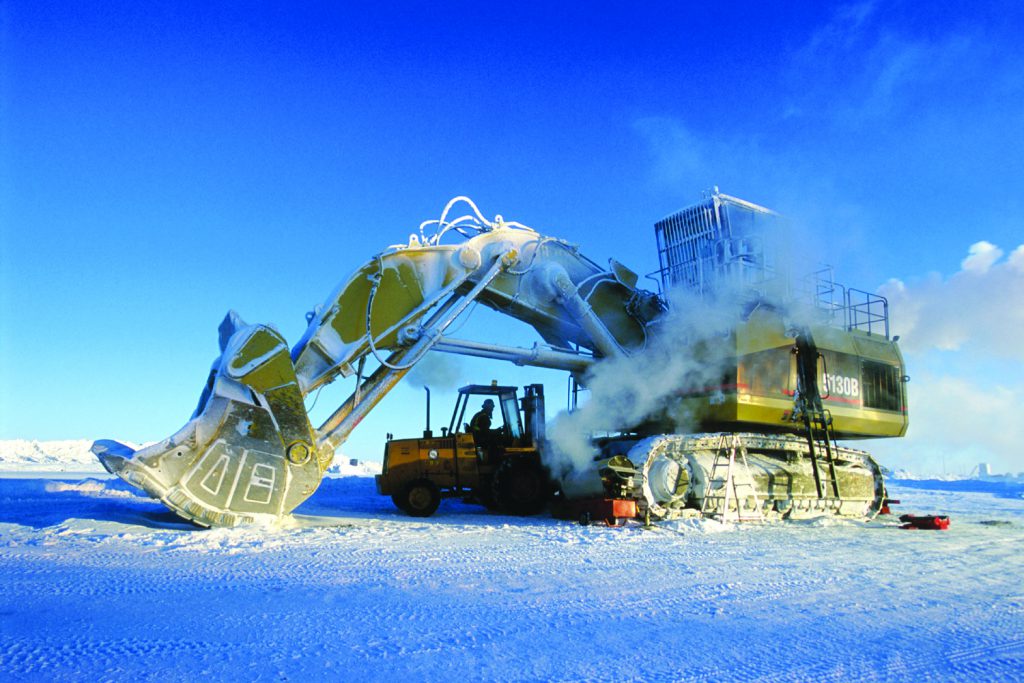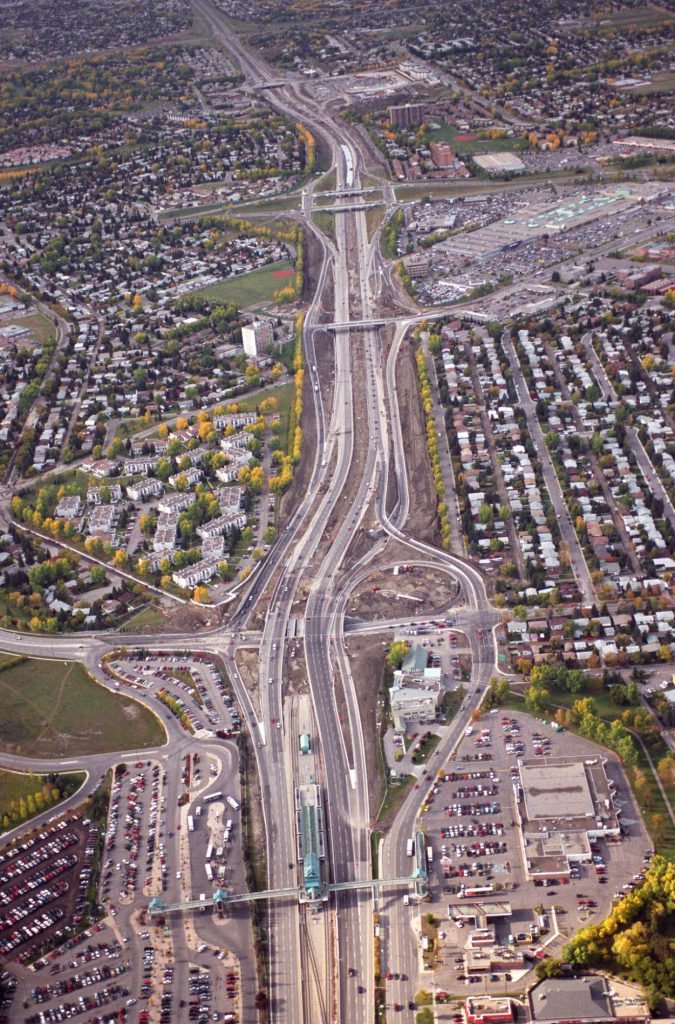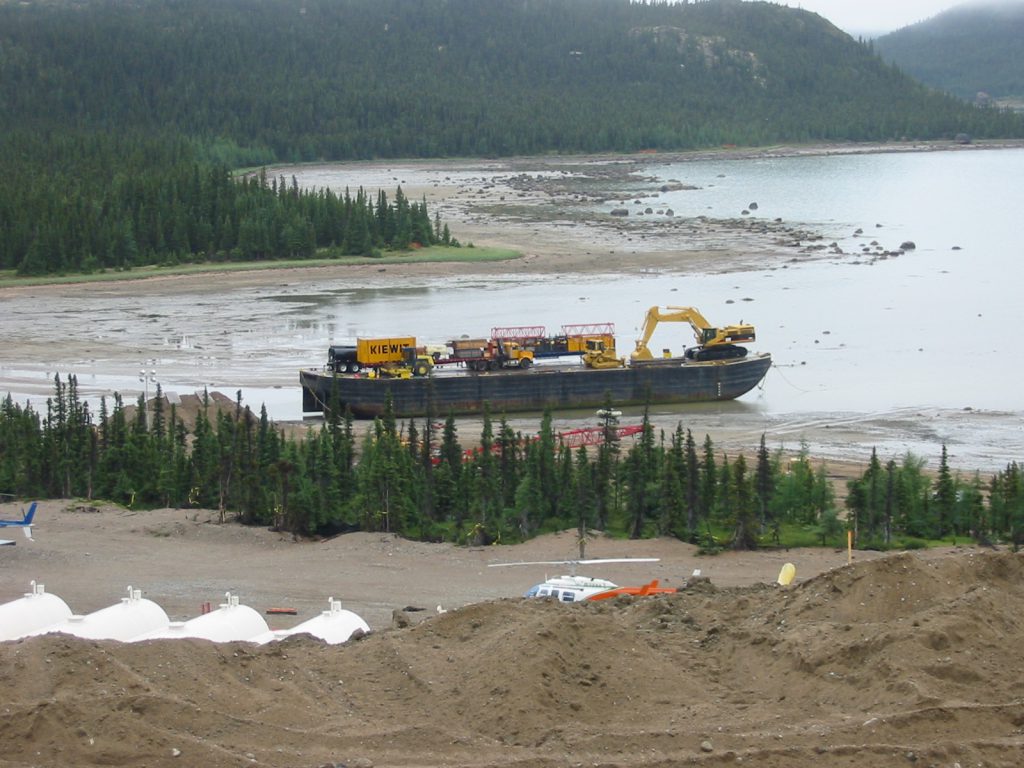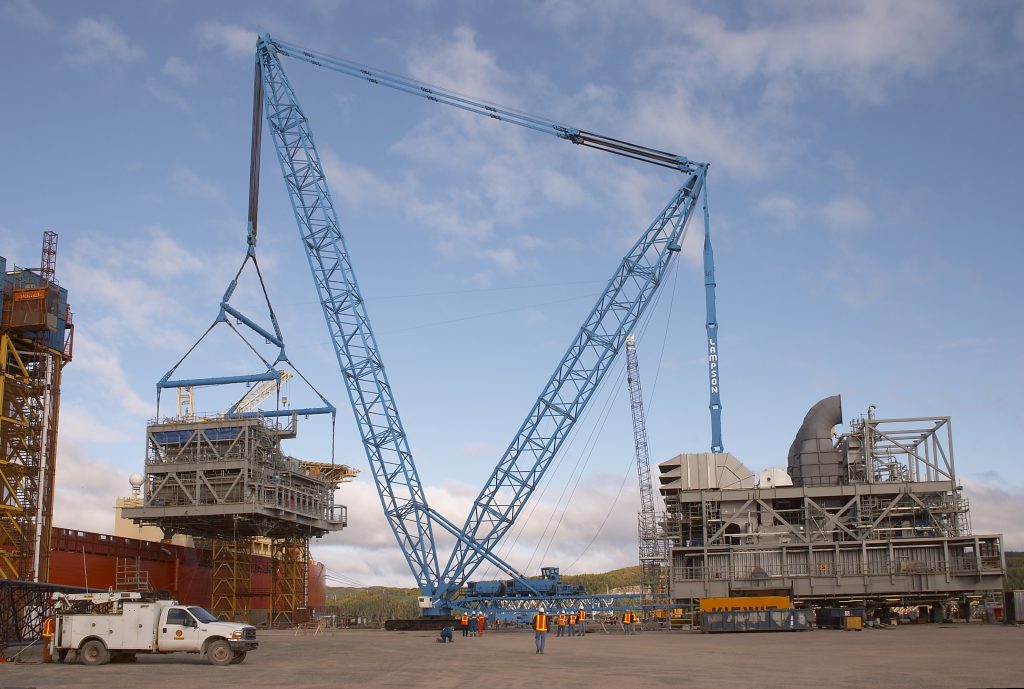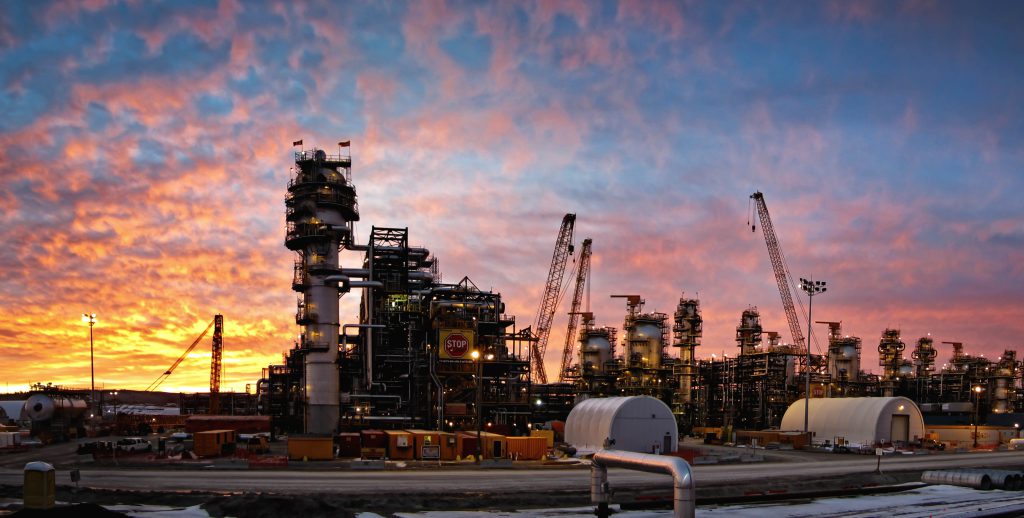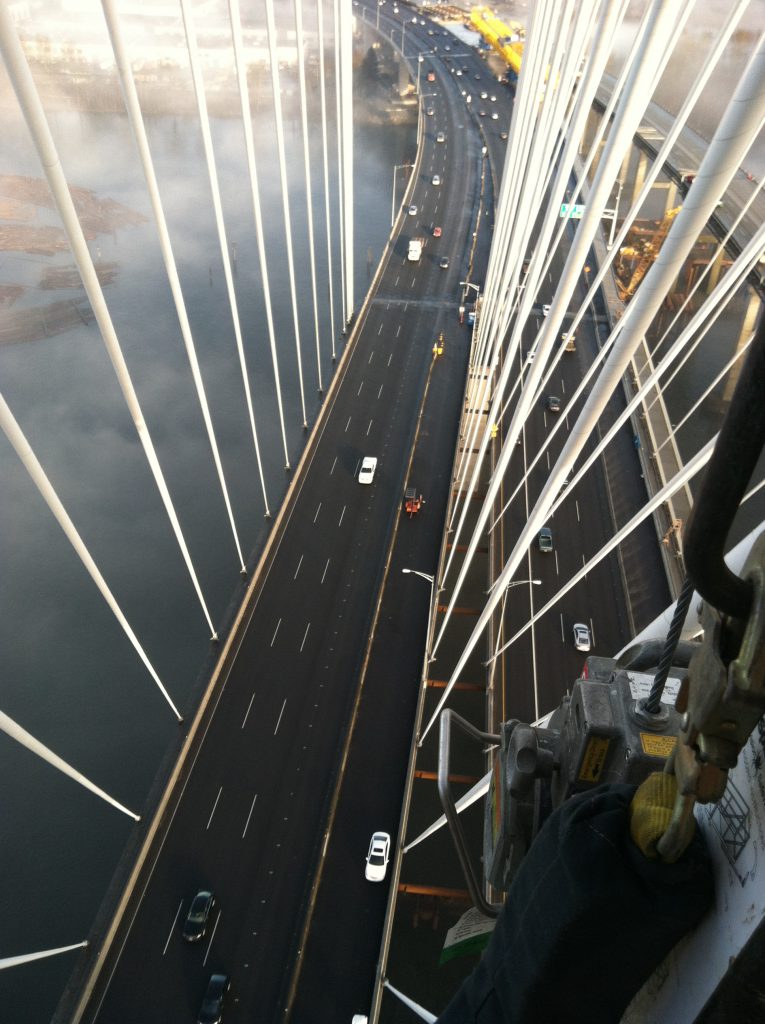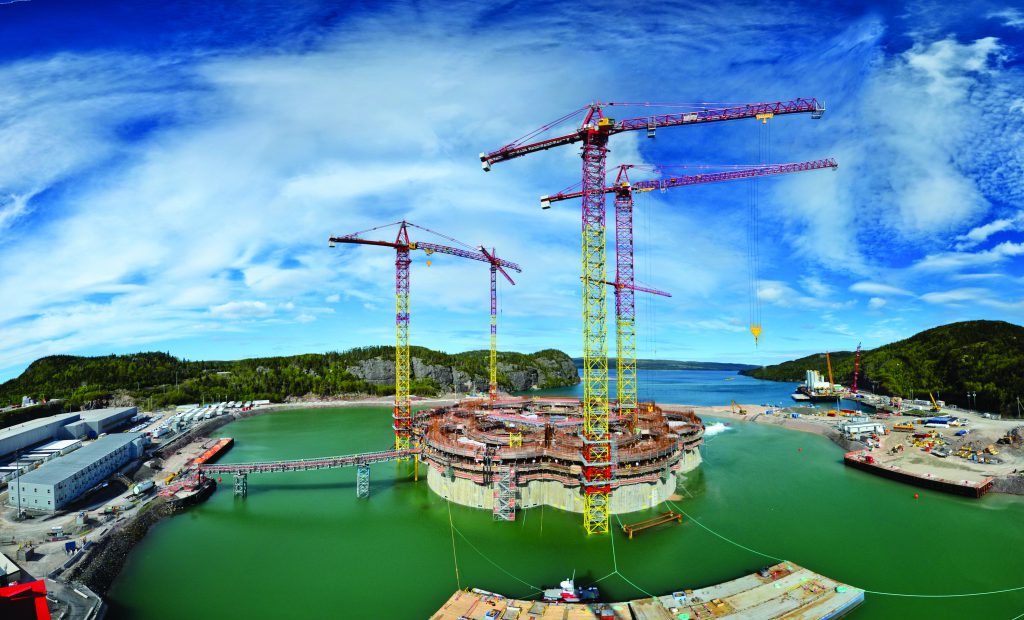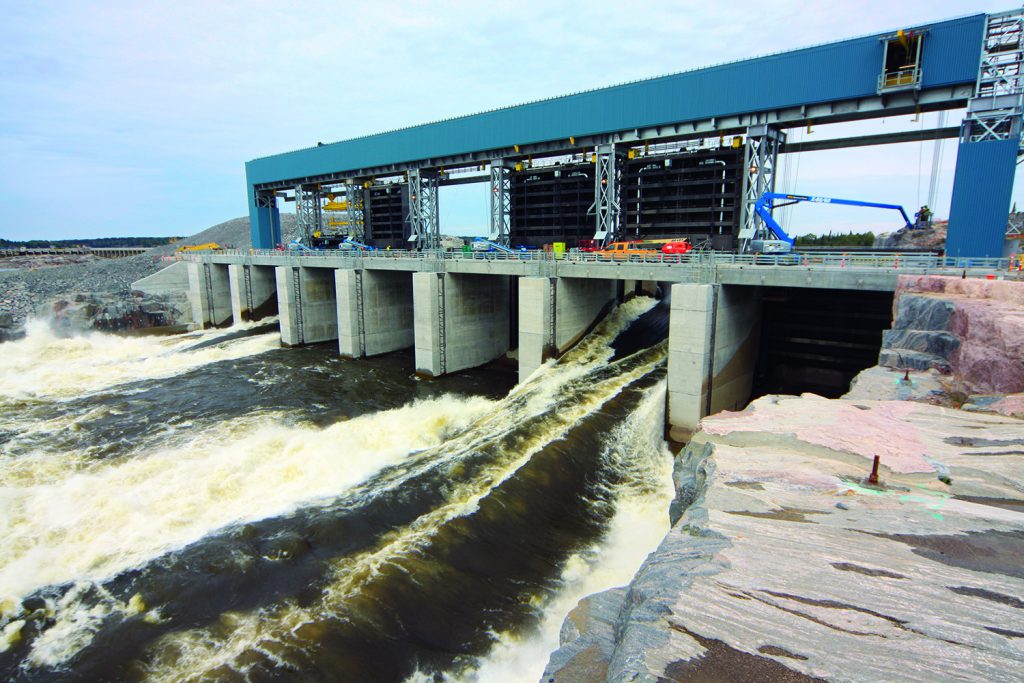Kiewit began its legacy in Canada in 1941 with a construction project typical of the country: large-scale and remote. Seventy-five years later, the tradition continues with projects stretching from coast to coast. Kiewit has been a part of landmark projects like the Hibernia Oil Platform, a turning point in the development of Newfoundland and Labrador’s crude-oil industry. It was the province’s first offshore oil project and Canada’s largest at the time. Kiewit has contributed to hydroelectric-power developments that deliver electricity to millions of Canadians. The organization’s people have worked on iconic structures like the Welland Canal, an important piece of transportation infrastructure that connects the Great Lakes to the Atlantic Ocean. They’ve helped shape the country’s urban landscape too, leaving their mark in major metropolitan centers like Vancouver with the Port Mann Bridge, and most recently in Montréal with the Turcot Interchange.
What follows is a timeline that features select Kiewit projects in Canada. It is not an exhaustive list, but rather a highlight reel of Kiewit’s contribution to the country and an expression of how Canada has helped shape Kiewit.
1941
Kiewit enters the Canadian market with the Norman Wells Oil Refinery and Pipeline. The company is hired by the U.S. Army Corps of Engineers to mobilize and transport all equipment and supplies needed to build a crude-oil pipeline from an oil refinery in Norman Wells, Northwest Territories, to the Alaskan coast.
1948
Kiewit mandates that all craft workers must wear hard hats while on the job as part of its pioneering safety focus and commitment.
1949
Kiewit opens its first office in Canada (as an extension of the Seattle District) in Vancouver, British Columbia.
1953
The first project in eastern Canada begins on Baffin Island. As part of the NORAD Early Warning System, Kiewit installs antennae towers to help defend North America against Russia during the Cold War, along with military housing in Goose Bay, Newfoundland and Labrador.
1954
Kiewit’s office in Vancouver,British Columbia, becomes its official “home base” in Canada.
1957
The Deas Island (George Massey) Tunnel project is the first of its kind in North America and second in the world. Kiewit constructs the tunnel that runs underneath the Fraser River connecting Richmond to Delta, British Columbia. The project is presented the Centennial Safety Award by the British Columbia Department of Labour.
1959
Queen Elizabeth II attends a ribbon-cutting ceremony to officially open the Deas Island (George Massey) Tunnel. Peter Kiewit — pictured below, back row left — takes this opportunity to shake her hand at his first of two meetings with the Queen — pictured below, front row center.
1963
Work begins on the Portage Mountain Dam (W.A.C. Bennett Dam) on the Peace River near Port Hope, British Columbia. Fifty-three years later, Kiewit will revisit the project and perform upgrades and refurbishments to the original structure, which is still considered one of the province’s greatest engineering achievements.
1964
Kiewit is hired to perform tunnel work for the new Metro de Montréal, Montréal’s subway system.
1968
Kiewit is hired to perform work on the iconic Welland Canal, excavating a total of 20 million cubic meters of material. Work is completed over the next two years and offers ships a safe detour from Lake Erie, around Niagara Falls to Lake Ontario.
1975
The James Bay Hydroelectric Complex consists of a main dam and 29 dykes of various sizes that close the reservoir. Kiewit constructs 16 of these dykes as part of the Duncan Dykes, the company’s first major contract in northern Québec.
1977
Kiewit constructs the technically challenging embankment across the Eastmain River as well as the spillway — which is blasted from the bedrock and is three times the height of Niagara Falls — as part of additional work at the James Bay Hydroelectric Power Development.
1978
Again as part of the James Bay Hydroelectric complex, Kiewit works on the LG-3 intake structure, and LG-4 dam and powerhouse. Completion of LG-3 and LG-4 in 1984 marks the end of Phase 1 of the project.
1980
Kiewit offices in Edmonton and Montréal are opened.
1983
Kiewit performs work on the Nipawin Dam, which is the second largest hydroelectric dam in Saskatchewan.
1990
Kiewit constructs the docking facility for the Maid of the Mist, the boat that ferries visitors to the base of the falls, in Niagara Falls, Ontario.
1991
Hydroelectric work in northern Québec continues as Kiewit helps build the powerhouse for La Grande-1 generating station on La Grande Rivière before it empties into James BayAs part of Vancouver’s Skytrain light rail system, Kiewit works on the Whalley Station’s substructure, guideway beams and superstructure.
1994
Kiewit puts its offshore expertise to good use on the Hibernia project in Newfoundland and Labrador.
1995
At the extreme limit of northern Québec, Kiewit begins development of the Raglan Nickel Mine. It is the start of a long-standing relationship with the client and the local community.
1997
Kiewit builds the Outlook Bridge that carries provincial Highway 15 across the South Saskatchewan River in Saskatchewan.
2000
The Diavik Diamond Mine, located 222 kilometers south of the Arctic Circle in the Northwest Territories, is Canada’s largest diamond mine in terms of carat production. Kiewit mobilizes what is equivalent to a small community before dyke construction and dewatering of the open pit mine begins.
Again contributing to Metro Vancouver’s Skytrain light rail transit system, Kiewit constructs the Lougheed Skytrain Station.
2001
Kiewit completes road widening, constructs three interchanges, upgrades the utility infrastructure, builds sound and retaining walls and prepares a section for future light rail extension on Crowchild Trail in Calgary, Alberta. The road is a 31.5- kilometer-long major thoroughfare that carries 60,000 vehicles per day.
Kiewit constructs the Arrows Lake Generation Station in Castlegar, British Columbia, meeting regularly with local residents, local and regional government, First Nations and joint venture partners to address stakeholder concerns and to ensure the community is benefiting from the project.
2002
Producing nickel and copper, the Voisey’s Bay Mine in Newfoundland and Labrador requires significant infrastructure to support the mine and its operations. Kiewit performs work on the mine area, mill site, port site and permanent airstrip and docking facility with a team consisting of Innu, Inuit and Métis aboriginal groups, 16 trade unions and numerous local partners.
Kiewit builds 13,000 tons of topside modules for the White Rose project at the Cow Head and Marystown shipyard facilities in Newfoundland and Labrador.
2003
Kiewit installs 21,000 meters of rail and associated infrastructure to extend the Montréal Metro to Laval, Québec.
2004
Kiewit begins work on the Sea-to-Sky Highway, from Vancouver to Whistler, British Columbia, in preparation for the 2010 Winter Olympic Games. Along with 65 kilometers of highway upgrades requiring 450,000 tons of asphalt, 48 new bridges and structures are built.
2006
The A-25 bridge and highway is Québec’s first public-private partnership (P3) in the transportation market. Kiewit builds the extension to improve public transportation between Montréal and the North Shore, and to provide an alternative route for freight transportation.
Kiewit completes the last phase of a six-year contract by supplying the cranes needed for the offloading and construction of windmills at the Cartier Wind Energy project in Québec.
2007
Kiewit Energy Canada Corp. is formed with its headquarters located in Calgary, Alberta.
Kiewit acquires Ganotec, extending the company’s reach in heavy industrial construction in Canada.
2008
Kiewit acquires TIC Canada.
2009
Kiewit begins work on the Froth Treatment Facility and Flare Silo at the Kearl Oil Sands in Fort McMurray, Alberta. Kiewit’s involvement with the project continues to this day as work on the expansion phase nears completion.
Kiewit begins work on the Gateway Project in Vancouver, British Columbia — the largest transportation infrastructure project in the province’s history. The 10-lane Port Mann Bridge is the second longest cable-stayed bridge in North America and one of the widest bridges in the world.
2010
The Lower Mattagami River Project is the largest hydroelectric power generation initiative in nearly 40 years in northern Ontario. Kiewit constructs a new station and adds to three other power generation stations along the river, increasing the province’s energy generation capacity to power up to 440,000 additional homes.
2011
Kiewit starts work on the stand-alone gravity based structure (GBS) for the Hebron oil platform in Newfoundland and Labrador.
Kiewit begins construction on the Kokish Hydroelectric project near Port McNeill on Vancouver Island, British Columbia.
At the northernmost tip of Québec, Kiewit builds five diesel tanks on the Nunavik Nickel project at Deception Bay.
2012
Kiewit designs and builds innovative new structures that reduce the number of spill gates from 97 to seven on the Winnipeg River in Pointe du Bois, Manitoba.
Kiewit constructs two tunnels on the Toronto-York Spadina Subway Extension from the City of Toronto into York Region — the first 1,540 meters long and the second 1,185 meters long.
2014
Ganotec Inc. and Ganotec West partner on the Nabiye project near Cold Lake, Alberta, providing all material and services for seven crude oil tanks at one of the largest and longest running thermal in situ heavy oil operations in the world.
Kiewit begins work on the Waterloo Light Rail Transit system in Kitchener-Waterloo, Ontario, the biggest infrastructure project in the region’s history.
Kiewit begins rebuilding the Turcot Interchange, an essential transportation link within the city of Montréal, Québec, with more than 300,000 vehicles per day in traffic volume.
2016
Kiewit celebrates its 75th anniversary in Canada. The company’s success and longevity is attributed to its ability to go where the work is, even in a country as vast as Canada. The evolution of the company is rooted in doing good work, committing to the highest of standards, and building a stronger organization — and country — for future generations.

